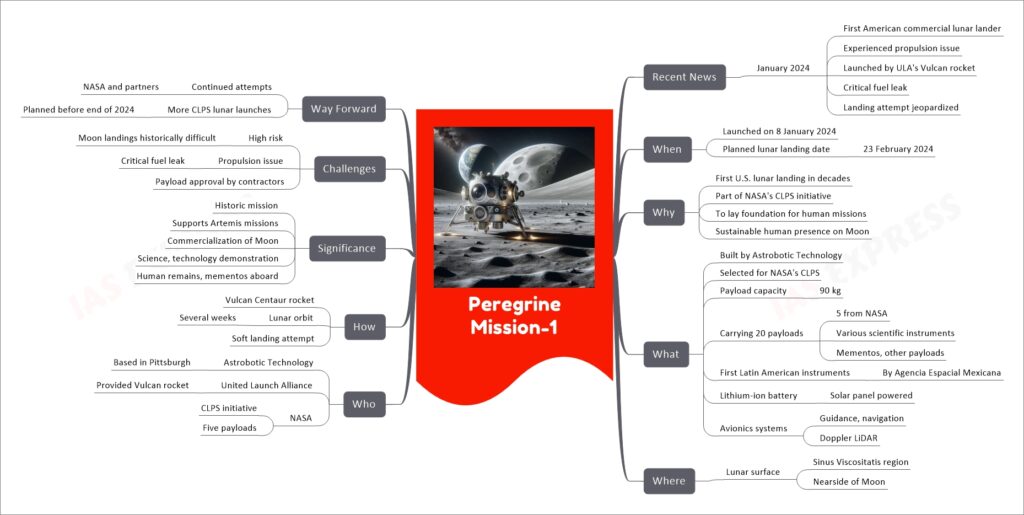Peregrine Mission-1

Peregrine Mission-1, launched on January 8, 2024, marks a significant milestone as the first American commercial lunar lander. This mission, part of NASA’s Commercial Lunar Payload Services (CLPS) initiative, aims to lay the foundation for future human missions and establish a sustainable human presence on the Moon. The lander, built by Pittsburgh-based Astrobotic Technology and launched aboard United Launch Alliance’s Vulcan rocket, experienced a propulsion issue and a critical fuel leak, jeopardizing its planned landing on February 23. The mission carries a variety of payloads, including five from NASA, scientific instruments, and other items representing human achievements. Despite challenges like the high risk of lunar landings and technical issues, the mission signifies the beginning of lunar commercialization and supports the upcoming Artemis missions.

